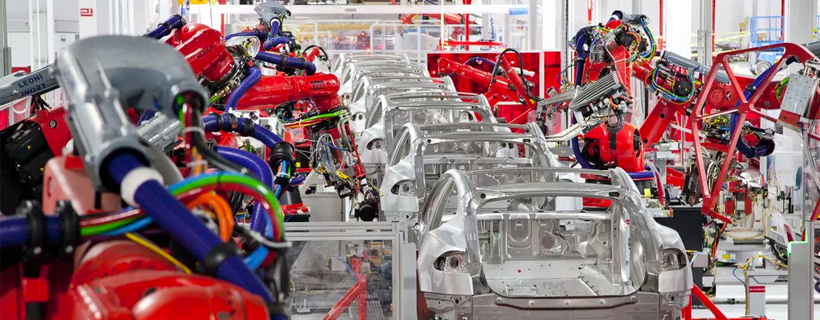We’re expecting bad news from next week’s release of Tesla’s Mar-19 production and delivery numbers. Challenging logistics will likely impact vehicles in transit to Europe and China, along with a potential step down in US demand as the EV tax credit pulled buyers into the Dec-18 quarter. Despite the company’s struggles, we continue to believe Tesla will prevail in the long term, in part because they’re blitzscaling.
Blitzscaling is a concept coined by Reid Hoffman of PayPal and LinkedIn success. The point of blitzscaling is to prioritize lightning-fast speed of growth over efficiency to capture what Hoffman calls a “first scaler advantage.” If a company can’t build some mechanism of loyalty into their product, they shouldn’t blitzscale because the first mover advantage becomes moot. Blitzscaling is a bet-the-company strategy that should only be used if there is a market sizable enough to justify the upfront risks.
In Hoffman’s book, he details the steps of Blitzscaling as:
- Do things that don’t scale
- Reach the next stage of blitzscaling
- Figure out how to do one set of things that scale while simultaneously doing another set of things that don’t scale
- Reach the next stage of blitzscaling
- Repeat until you reach market dominance
Tesla seems to be embracing these characteristics of blitzscaling. It’s attacking a nascent but potentially massive market in electric vehicles. It’s achieving customer lock-in through a tech-forward approach of viewing cars as a living combination of hardware and software that can be updated, the supercharger network, and a more physical lock-in of the installation of in-home charging infrastructure. Most importantly, the company has been prioritizing growth by doing a mix of things that scale and don’t (eg. doing Model 3 construction by hand after the mass automation plans failed and announcing the Model Y that will leverage a lot of the Model 3). We see this strategy reflected in strong top-line growth, but limited profitability and consequent cash concerns at Tesla.
If Musk started Tesla five years later, the company would probably still be private and blitzscaling funded by private money that seems to more readily embrace blitzscaling. See the success of companies like Uber and Airbnb. If public investors saw the balance sheets of some of these private companies when they were deep into blitzscaling, they’d probably think they were at risk of going bankrupt too. Tesla is in the difficult position of blitzscaling as a public company where we all have access to their finances and can speculate as to the company’s solvency. Even worse for Tesla, public market investors can bet against the company and vocalize those short bets, creating the religious battle lines we see between Tesla bulls and bears.
Blitzscaling might be the wrong strategy for Tesla. The EV market may not end up being as big as we think. There may be less customer lock-in for EVs than in ridesharing or home rental. Margins may never reach a level where the long-term value ultimately accrued by a leadership position repays the initial capital outlay and risk of the strategy. Alternatively, blitzscaling might be the right strategy and Tesla could just fail at it by running out of cash before it gets there. There’s also always the wild card of Elon Musk.
There are plenty of reasons Tesla could win and plenty of reasons Tesla could fail. As long as investors understand why Tesla is running its business they way they are, they can make an educated bet on the strategy rather than choose the emotional path of thinking the company has to succeed for noble reasons or fail for reasons of dislike.
Disclaimer: We actively write about the themes in which we invest or may invest: virtual reality, augmented reality, artificial intelligence, and robotics. From time to time, we may write about companies that are in our portfolio. As managers of the portfolio, we may earn carried interest, management fees or other compensation from such portfolio. Content on this site including opinions on specific themes in technology, market estimates, and estimates and commentary regarding publicly traded or private companies is not intended for use in making any investment decisions and provided solely for informational purposes. We hold no obligation to update any of our projections and the content on this site should not be relied upon. We express no warranties about any estimates or opinions we make.
